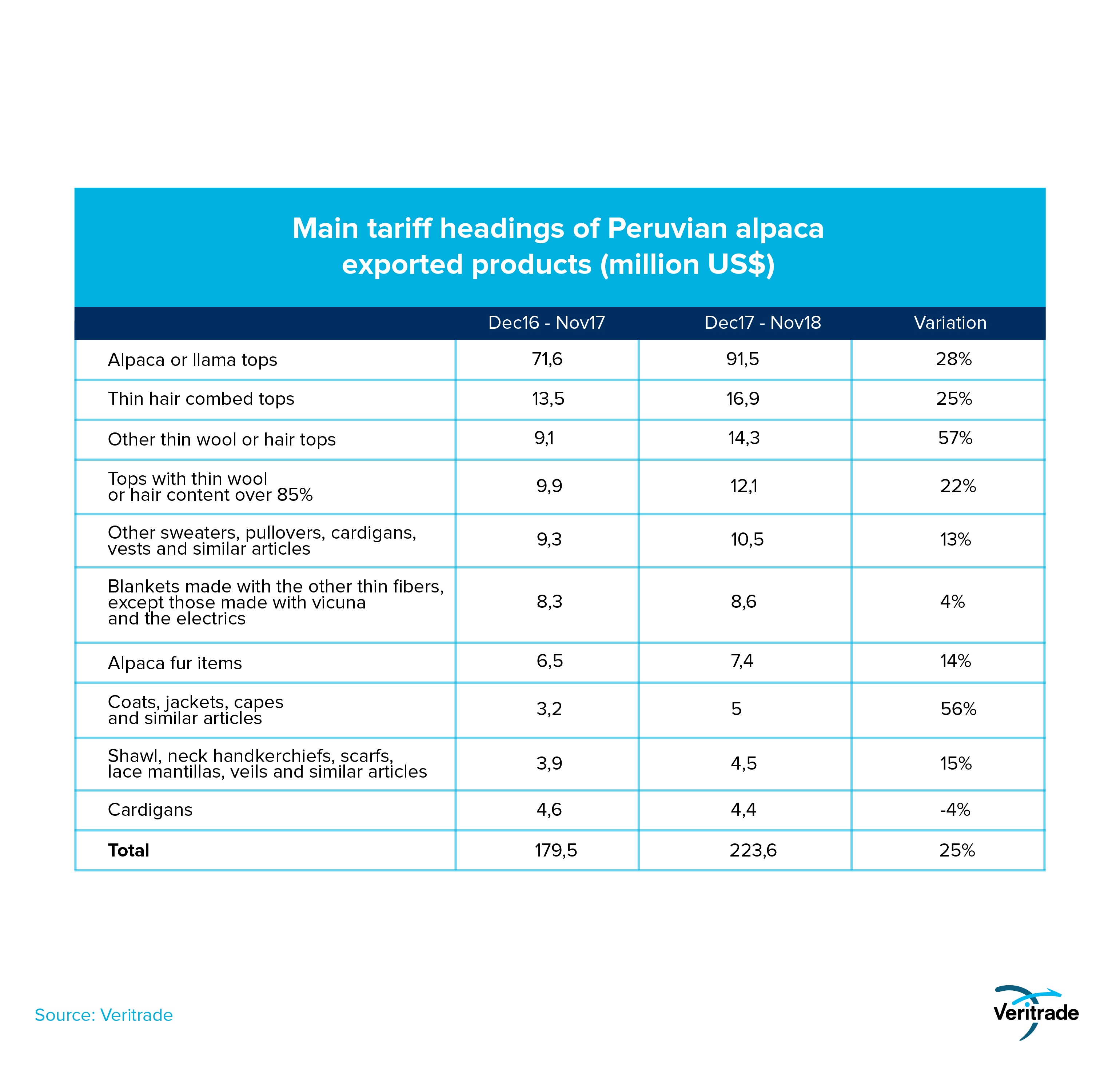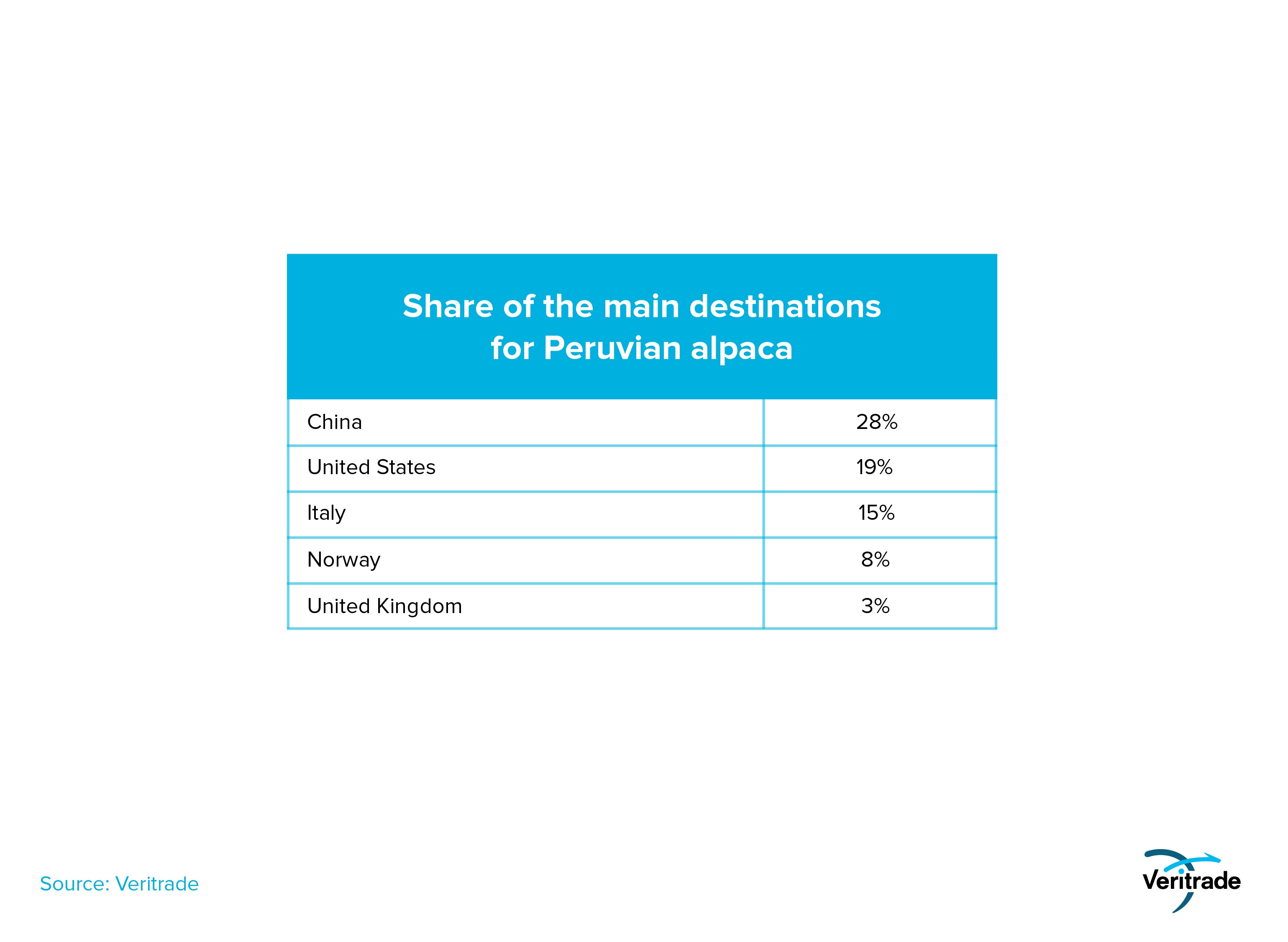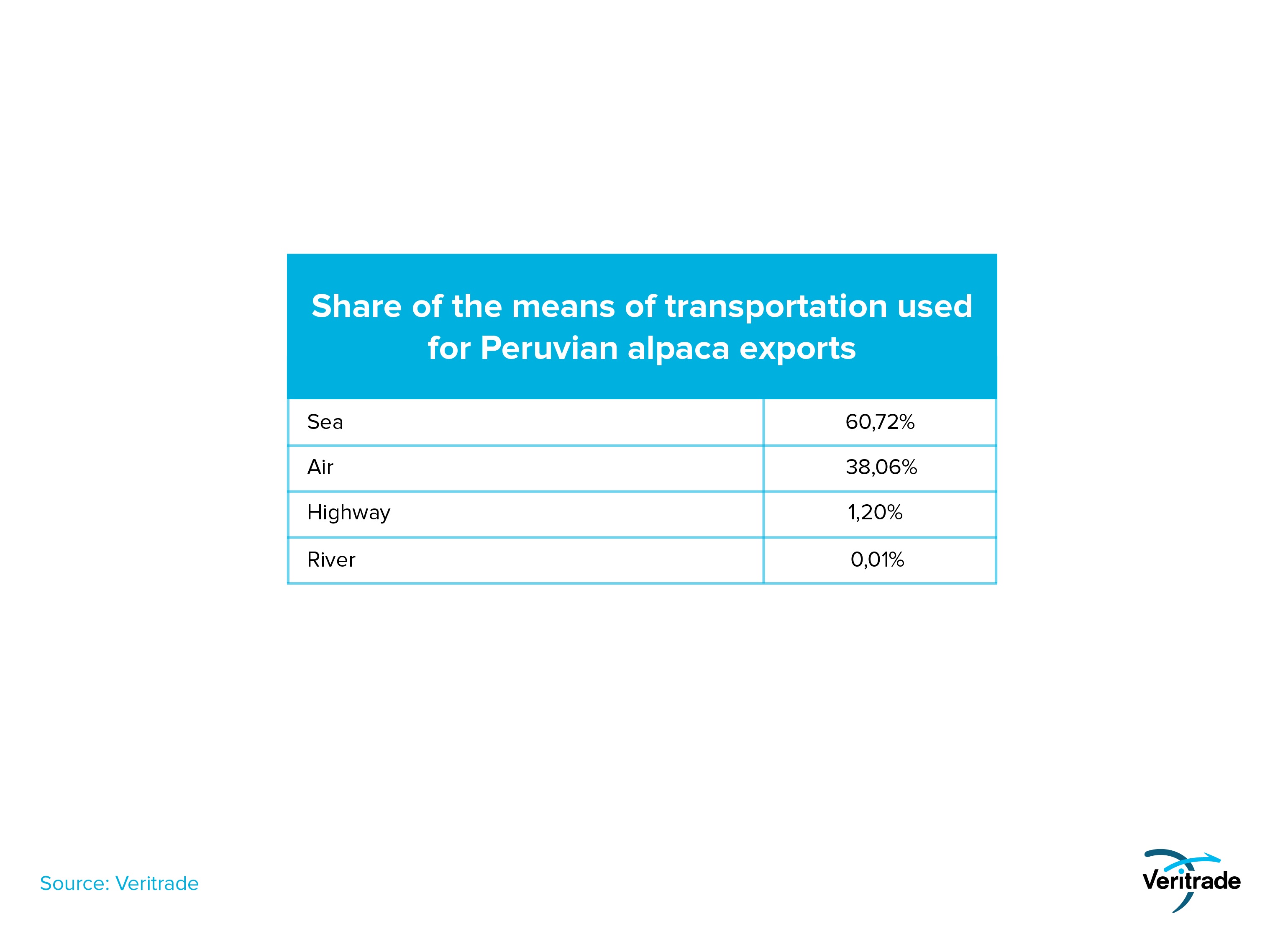Exports of textiles such as Peruvian alpaca are on the rise
Published on 19 February 2019
Both yarns and garments have seen growth in the value of their shipments.
The non-traditional export portfolio of Peru is usually highlighted from the perspective of food. However, little is said about other elements that are still expanding in international markets.
In the case of textiles, auquénidos fibers are an excellent source of exploitable value in competitive terms. Specifically, alpaca is the most demanded species in the market, due to its thermal, aesthetic and durability properties, and at affordable prices, compared to vicuña and other fine fibers.
On the other hand, while cotton garments struggle to survive in the global market due to competition with other countries that supply long fiber at more competitive prices, in the use of biotechnological advances such as the development of genetically modified organisms (known as transgenic). In contrast, fibers of animal origin have continued to make their way overseas constantly.
Following is the evolution of Peruvian exports of the main alpaca products between December 2017 and November 2018, compared to the same period before.

It should be noted that shipments include both raw materials and finished products. Among these, yarns are the most moving, and have also recorded high growth rates. However, companies have the opportunity to advance with garments, accessories and blankets, although it is more difficult to reach the end user than garment factories and other products, which will take on the risk and absorb the cost of distribution and Retail marketing. In spite of the above, Peruvian exporters handle brands and even have stores abroad that include the franchise format.
On the other hand, it is interesting to look at the markets to infer the dynamics of the demand that is being addressed. The following table shows the most outstanding destinations for Peruvian alpaca products.

It is understandable that China is the largest market for the facilities that the low cost of labor gives to convert the product. If this work were done entirely in Peru, probably the total export earnings of alpaca products would be lower because it would come with higher final prices and would take advantage of a smaller part of the demand, which is indirectly reached with the export of yarns .
Meanwhile, the United States and Europe are relevant destinations for finished products, since the most sophisticated consumers are in those countries. Also, the cold winter of non-tropical countries is another factor that drives demand.
Another interesting factor is the way in which the merchandise is transported. The high participation of the airway, predominant in clothes, accessories and blankets, is surprising. However, as expected, given the predominance of yarns and the lower fragility of the product, the seaway is the most relevant, as shown in the following table.

In general terms, Peruvian exporters have been able to take advantage of markets and their demands, subject to the competitiveness constraints that define their business strategies. The challenge is to maintain a good primary production structure in the breeding of alpacas, and to continue advancing with the use of the productive and commercial chain in each of the stages to invest in the appropriate phases and maximize the value obtained from the initial product: the fiber. This has to continue advancing as a raw material, but also lead to new evaluations of value proposals to reach the final consumer, if the estimates of the value and the risk of the business support it.
For more information on Peruvian exports of alpaca products, you can access the Veritrade portal.
Request your free trial by going to: https://bit.ly/2XcX1Hp